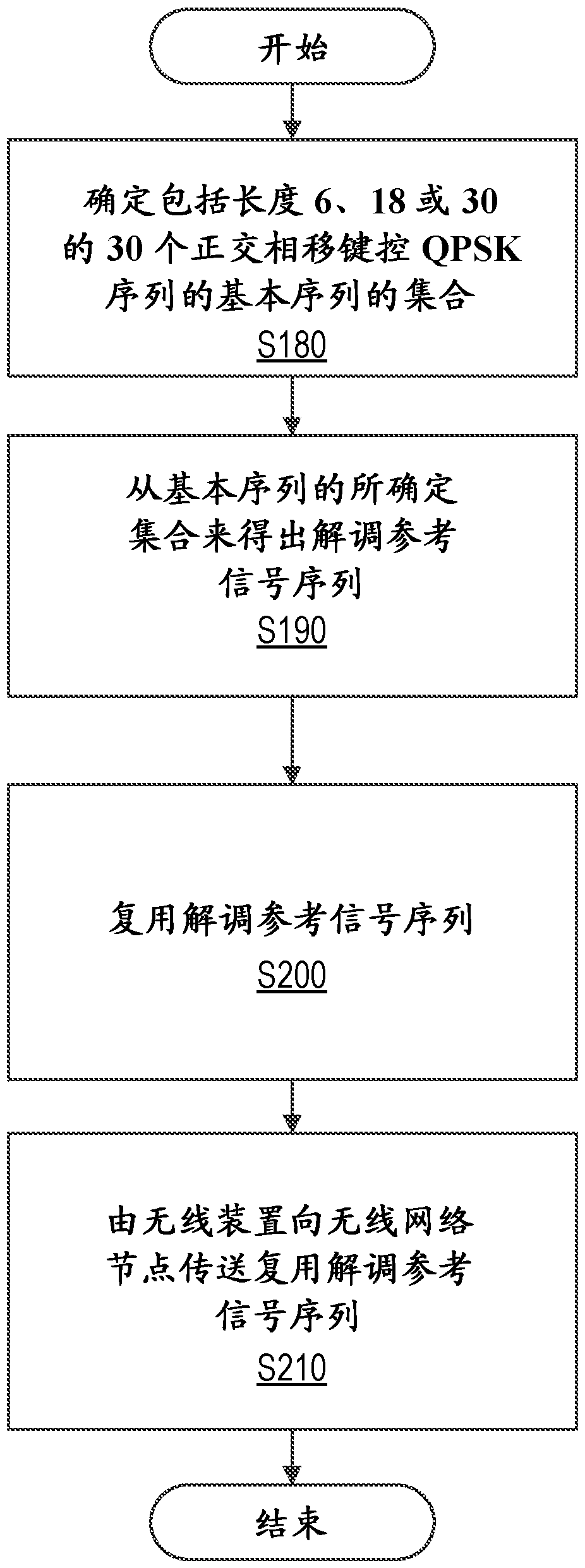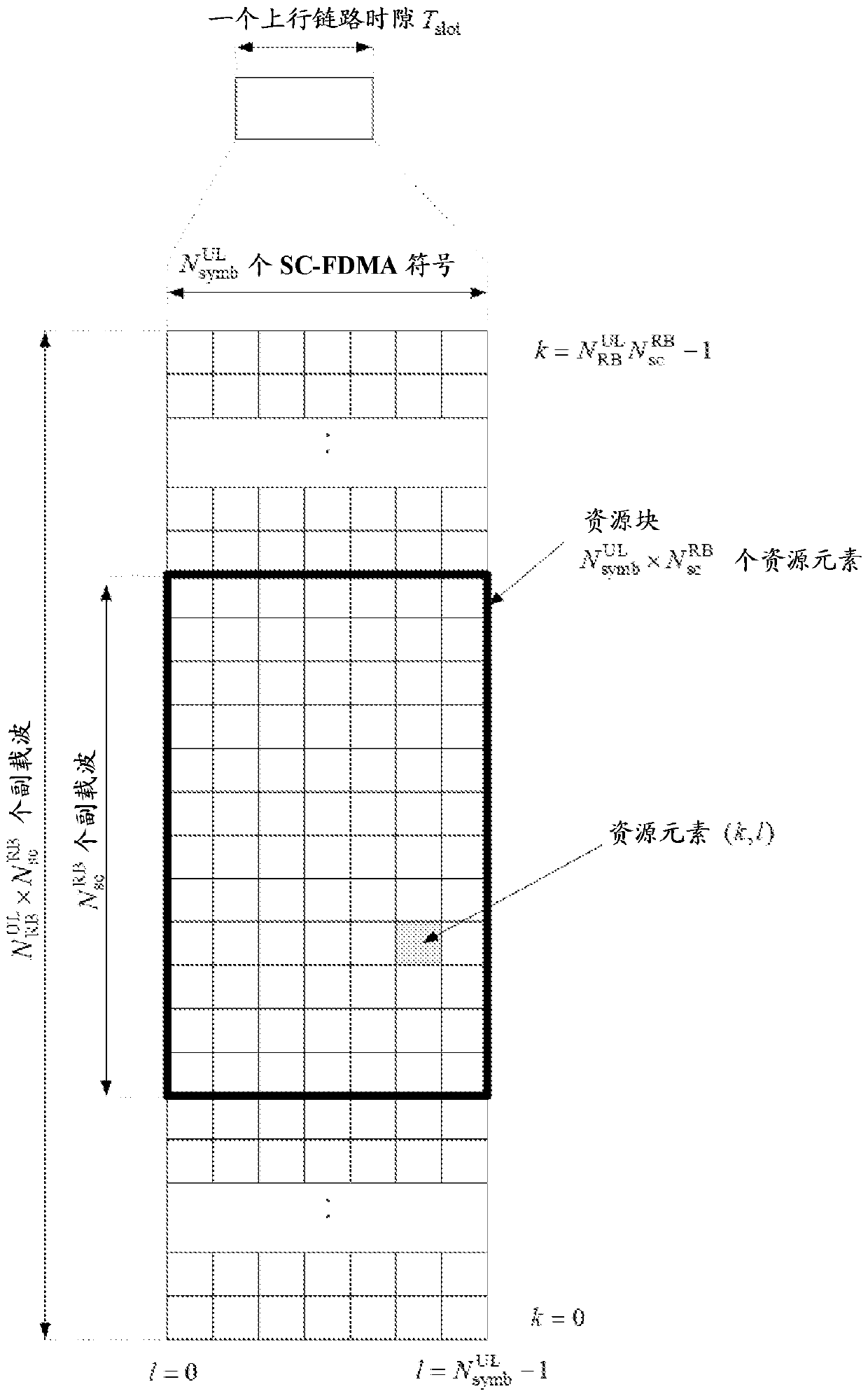Power and resource efficient uplink dmrs sequences for ifdma
A SC-OFDMA and sequence technology, applied in the field of wireless devices, can solve the problem of not carrying information
- Summary
- Abstract
- Description
- Claims
- Application Information
AI Technical Summary
Benefits of technology
Problems solved by technology
Method used
Image
Examples
Embodiment 0A
[0344] Embodiment OA. A method of transmitting a reference signal at a reduced power level while maintaining the identifiability of the reference signal among other reference signals, the method comprising:
[0345] A sequence of QPSK symbols constituting quadrature phase shift keying;
[0346] wherein the sequence has a cubic metric smaller than a first predefined threshold;
[0347] and wherein the maximum cross-correlation between the sequence and a predetermined set of sequences is less than a second predefined threshold, wherein the predetermined set of sequences includes sequences transmittable by the wireless device; and
[0348] A sequence of QPSK symbols is transmitted.
Embodiment 1A
[0349] Embodiment 1A. A method of operating a wireless device 20, the method comprising using a reference signal sequence at a predetermined power level, wherein:
[0350] having identified a first set of signal sequences having at least one of a peak-to-average power ratio PAPR and a cubic metric CM below a corresponding threshold;
[0351] A second set of signal sequences has been identified as the first set or a subset of the first set, wherein optionally the second set has been determined by eliminating sequences of the first set of candidate signal sequences having the highest cross-correlation magnitude statistics identification, wherein optionally the elimination is iterative; and
[0352] A second set of signal sequences has been designated as reference signal sequences.
[0353] Embodiment 2A. The method of Embodiment 1A, wherein the values of the first set of signal sequences and the second set of signal sequences are the same.
[0354] Embodiment 3A. The method ...
Embodiment 11A
[0362] Embodiment 11A. A method for multiplexing reference signals occupying different numbers of subcarriers, the method comprising:
[0363] determining a first reference signal sequence having a length L;
[0364] transmitting a subset of the first reference signal sequence on a first subset of the set of L subcarriers; and
[0365] A zero amplitude signal is transmitted on subcarriers that are not in the first subset of subcarriers.
PUM
 Login to View More
Login to View More Abstract
Description
Claims
Application Information
 Login to View More
Login to View More - R&D
- Intellectual Property
- Life Sciences
- Materials
- Tech Scout
- Unparalleled Data Quality
- Higher Quality Content
- 60% Fewer Hallucinations
Browse by: Latest US Patents, China's latest patents, Technical Efficacy Thesaurus, Application Domain, Technology Topic, Popular Technical Reports.
© 2025 PatSnap. All rights reserved.Legal|Privacy policy|Modern Slavery Act Transparency Statement|Sitemap|About US| Contact US: help@patsnap.com



